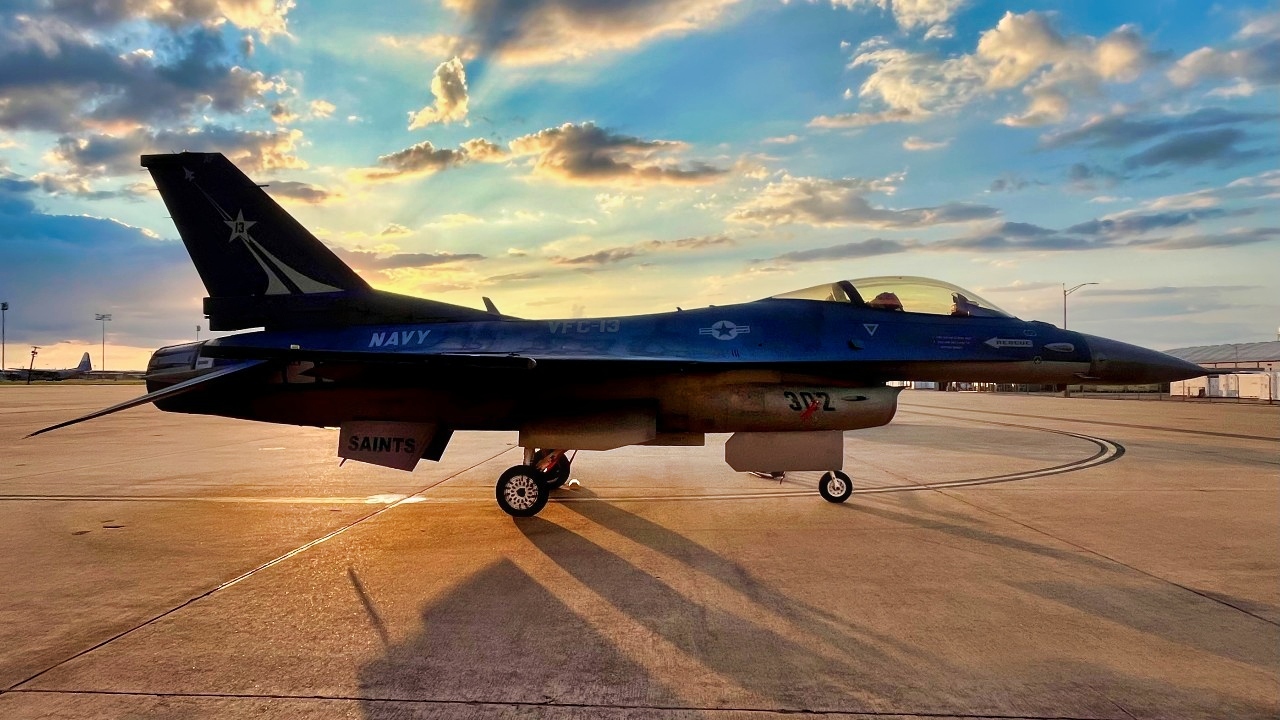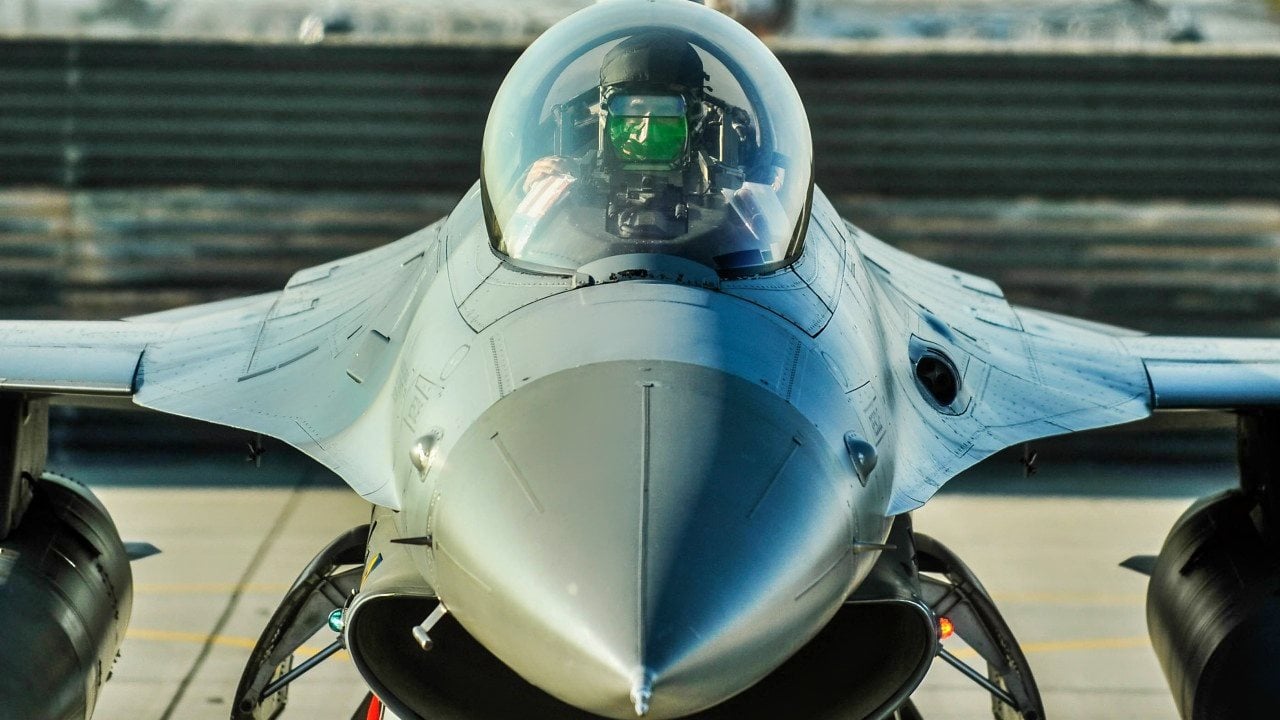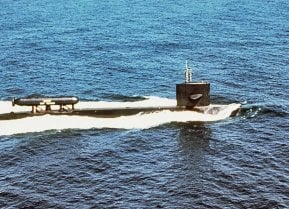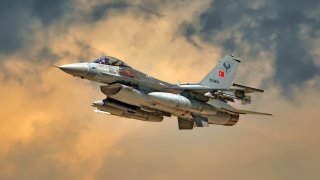There Are 'No Small Accidents' With Expensive Fighters F-16 Incident Proves
The report’s conclusion is that the maintainers’ “loose culture of adherence” to necessary standards likely resulted in costly damage to the F-16.
There are no small accidents when it comes to military aircraft—that is something that was learned the hard way last year involving a parked F-16 Fighting Falcon. That incident could end up costing U.S. taxpayers $30 million.
It was a simple mistake, but as noted a costly one.

Last week the U.S. Air Forces Europe-Air Forces Africa released its forty-one-page Accident Investigation Board report, which blamed the accident on “A loss of situational awareness on the part of the weapons loader operator and failure to properly apply emergency shutdown procedures.”
What We Know
It was nearly a year ago, on November 17, 2023, that an MJ-1 weapons loader—almost fittingly known as a “jammer”—struck an F-16 from the 555th Fighter Squadron, 31st Operational Group, 31st Fighter Wing while the aircraft was the ground. The Fighting Falcon had been deployed from Aviano Air Base, Italy, to an undisclosed location in Southeast Asia.
A weapons loader, known as the MXLC2, and the weapons loader driver, or MXLC3, were charged with removing munitions from an F-15E Strike Eagle. While driving the jammer to the aircraft, the bomb lift operator was unable to stop the vehicle after putting it in reverse gear.
In the confusion, the MJ-1 nearly struck the F-15E, while MXLC3 hit his head and injured his back on the multirole aircraft’s bomb rack unit. According to the U.S. Air Forces Europe-Air Forces Africa, the operator was pinned to the dashboard, while the jammer then “bounced off the landing gear tire of the F-15E, simultaneously throwing the operator off the jammer while also sending the jammer toward the F-16 at a high rate of speed.”
Upon impact with the Fighting Falcon, the loading vehicle caused a small fuel leak in the aircraft. Sparks from the MJ-1 subsequently “ignited a fire that engulfed the jammer and the right side of the F-16.”
A Fender Bender of Enormous Scale
Though neither the loader nor the weapons loader driver suffered any significant injuries, the incident did result in “approximately $5,000 in environmental clean-up costs” as well as “$30 million in damages to the mishap aircraft.” It is unclear when the F-16 has been returned to service.
The report noted that the weather had no relevant impact that resulted in the incident, and “all members of the weapons load crew were Personnel Reliability Program (PRP) certified and medically qualified to perform their responsibilities.”

Both had been certified for their particular jobs, and the lifestyles of the individuals were not a factor. Moreover, the report found that the crew had received adequate rest when the accident occurred. However, it was determined that MXLC2 had “failed to properly follow the emergency shutdown procedures of the mishap jammer.”
Subtle Differences in Loading Vehicle
It has also been determined that a contributing factor may have been subtle differences between the two models of the jammer.
It is the standard lift vehicle that is employed to transport, load, and unload a variety of ordnance and other equipment on U.S. Air Force fighter planes and aircraft. According to the National Museum of the United States Air Force, the jammer ”has served as the standard USAF bomb load vehicle since the 1950s. It was used extensively during both the Vietnam War and the Persian Gulf War. The MJ-1 can lift stores to a maximum height of 78 inches and uses side fork adapters and extension lift arms for increased flexibility. Controls at the rear of the lift table allow the load crew to make small adjustments for precise positioning of stores during loading.”
Each jammer has a capacity of 3,000 pounds.
However, there are actually two different models currently in service—the MJ-1B and MJ-1C. To the untrained eye, the jammers may look identical but there are minor differences in key systems including braking and steering. Notably, the foot brake location is at a slightly different position on MJ-1C, which was being used at the time of the incident.
When the vehicle became stuck in reverse, the operator panicked—pressing the accelerator instead of the brake when he should have followed the proper emergency shutdown procedures.
The problem was exacerbated by the fact that three jammers were on the flightline on the night of the incident. One had failed to start, while another wasn’t found to be working properly. This likely contributed to the confusion over the placement of the controls.
The report’s conclusion is that the maintainers’ “loose culture of adherence” to necessary standards likely resulted in costly damage to the F-16.
All because the jammers weren’t properly maintained and procedures followed!
Author Experience and Expertise: Peter Suciu
Peter Suciu is a Michigan-based writer. He has contributed to more than four dozen magazines, newspapers, and websites with over 3,200 published pieces over a twenty-year career in journalism. He regularly writes about military hardware, firearms history, cybersecurity, politics, and international affairs. Peter is also a Contributing Writer for Forbes and Clearance Jobs. You can follow him on Twitter: @PeterSuciu. You can email the author: [email protected].
Image Credit: Creative Commons and/or Shutterstock.


